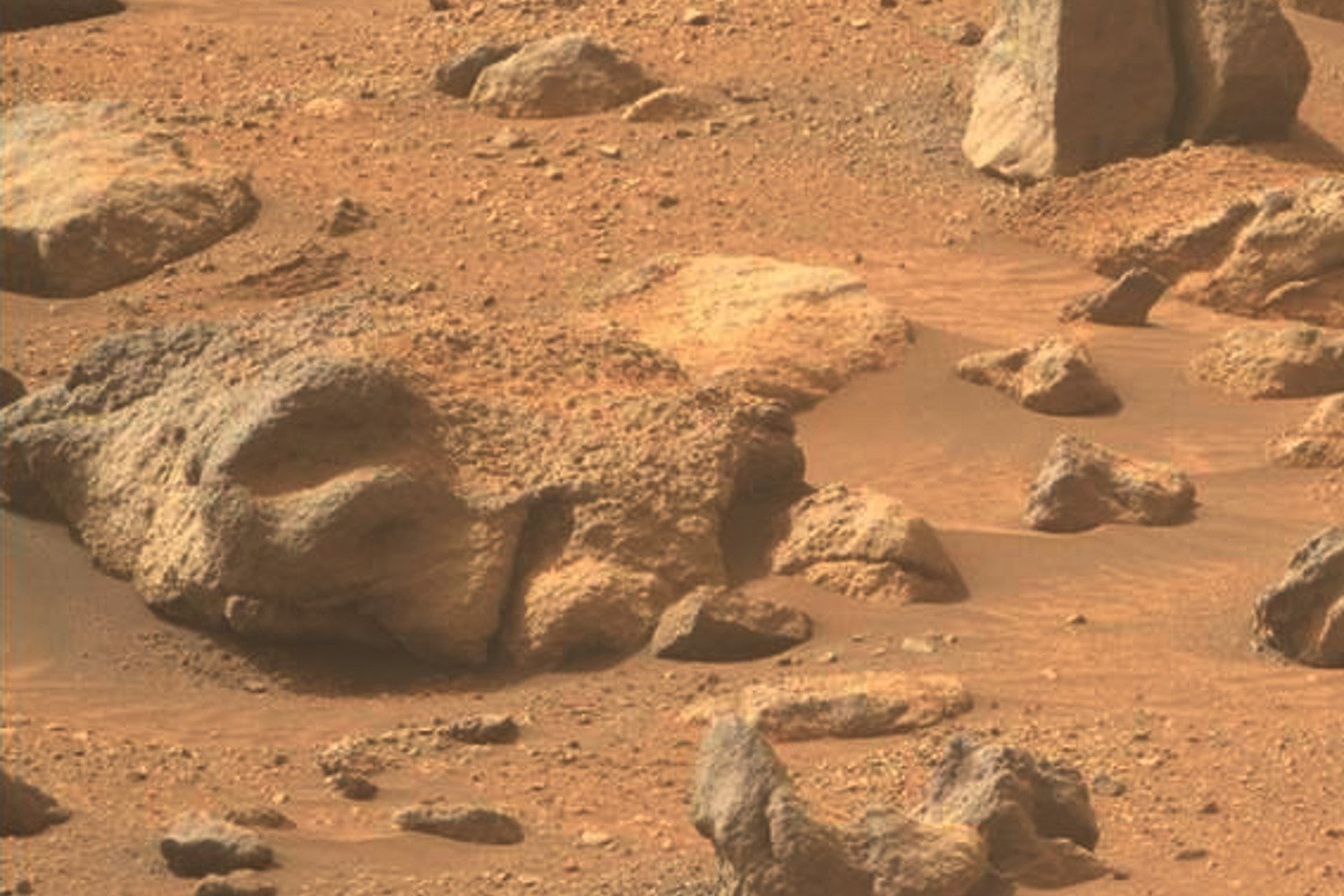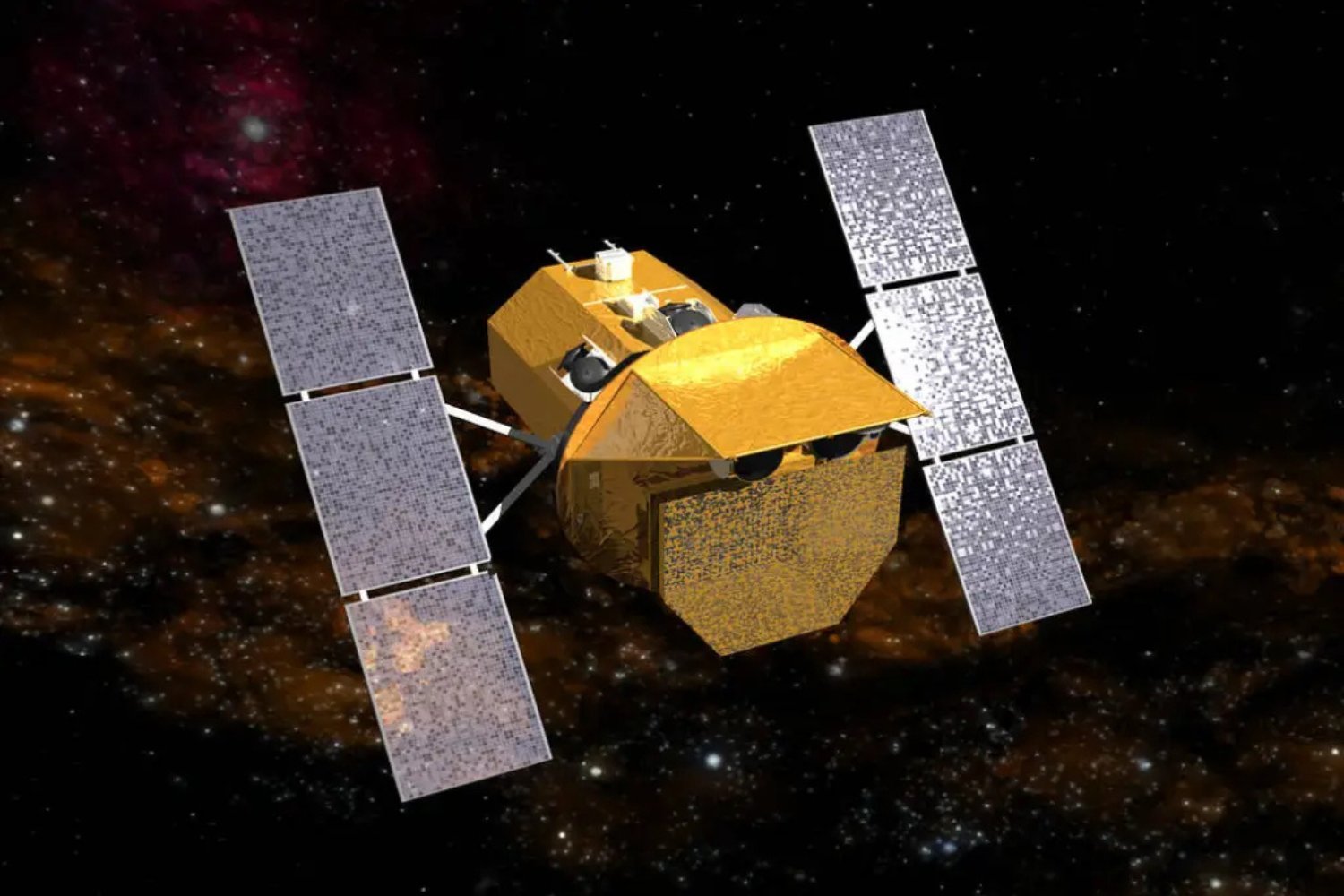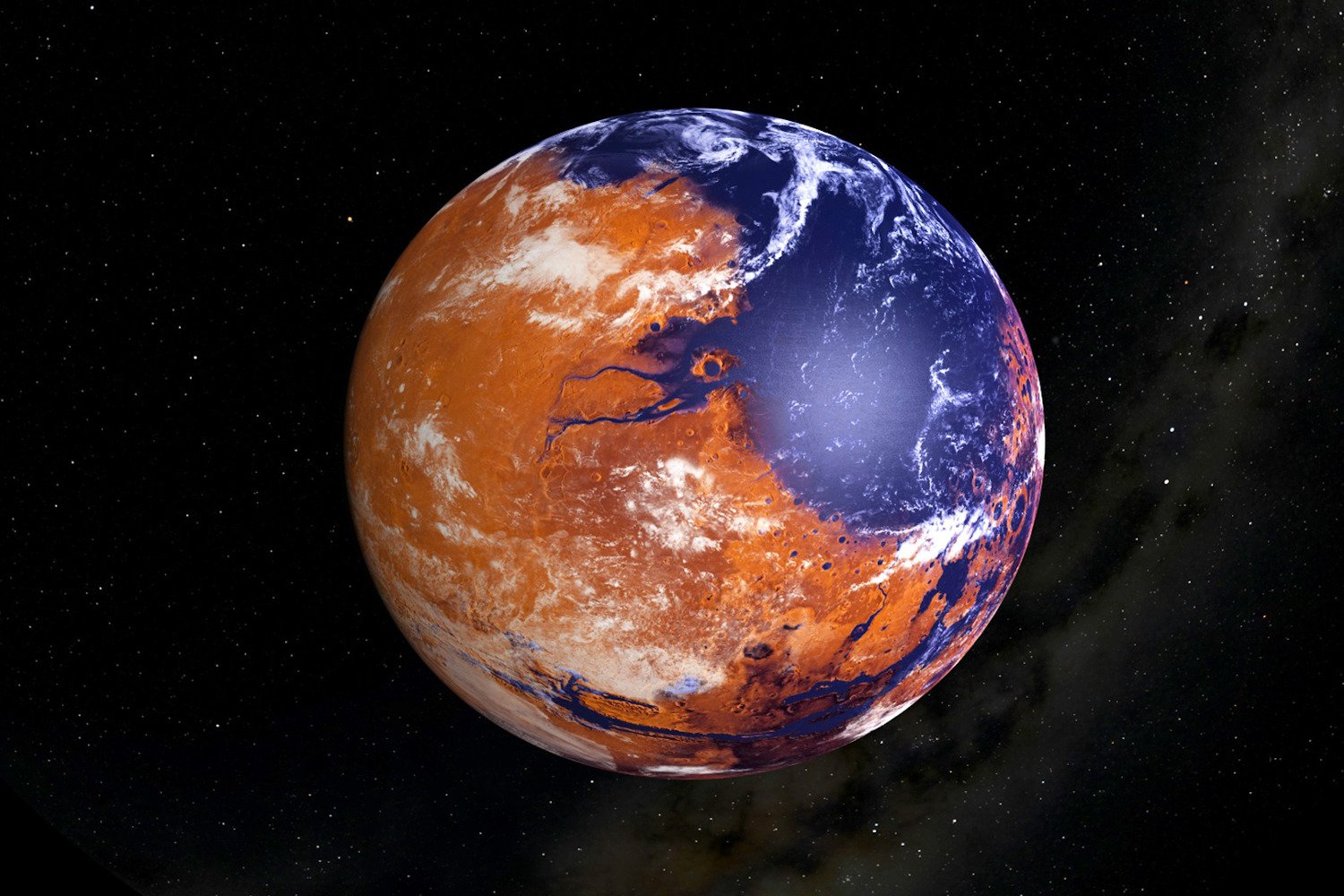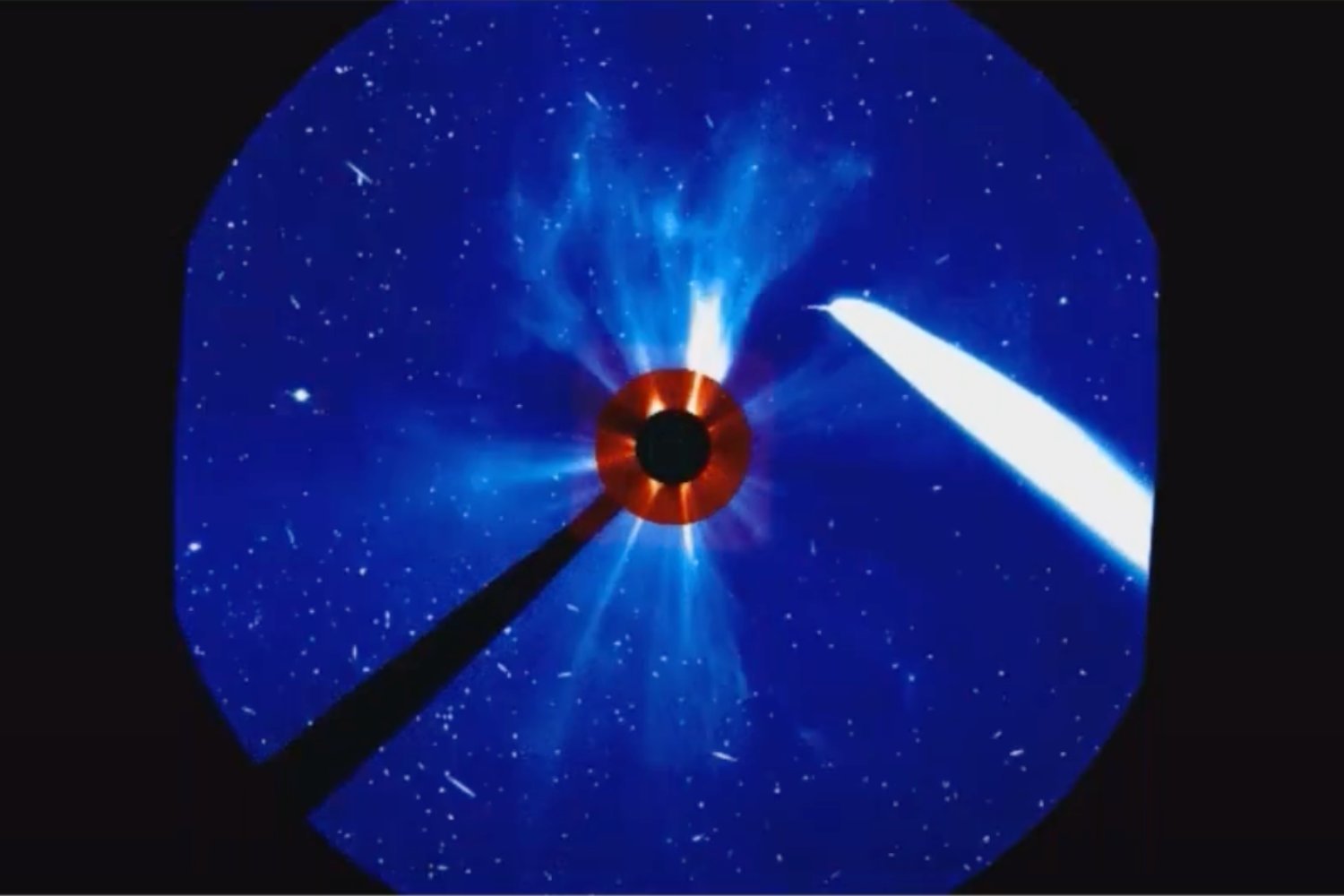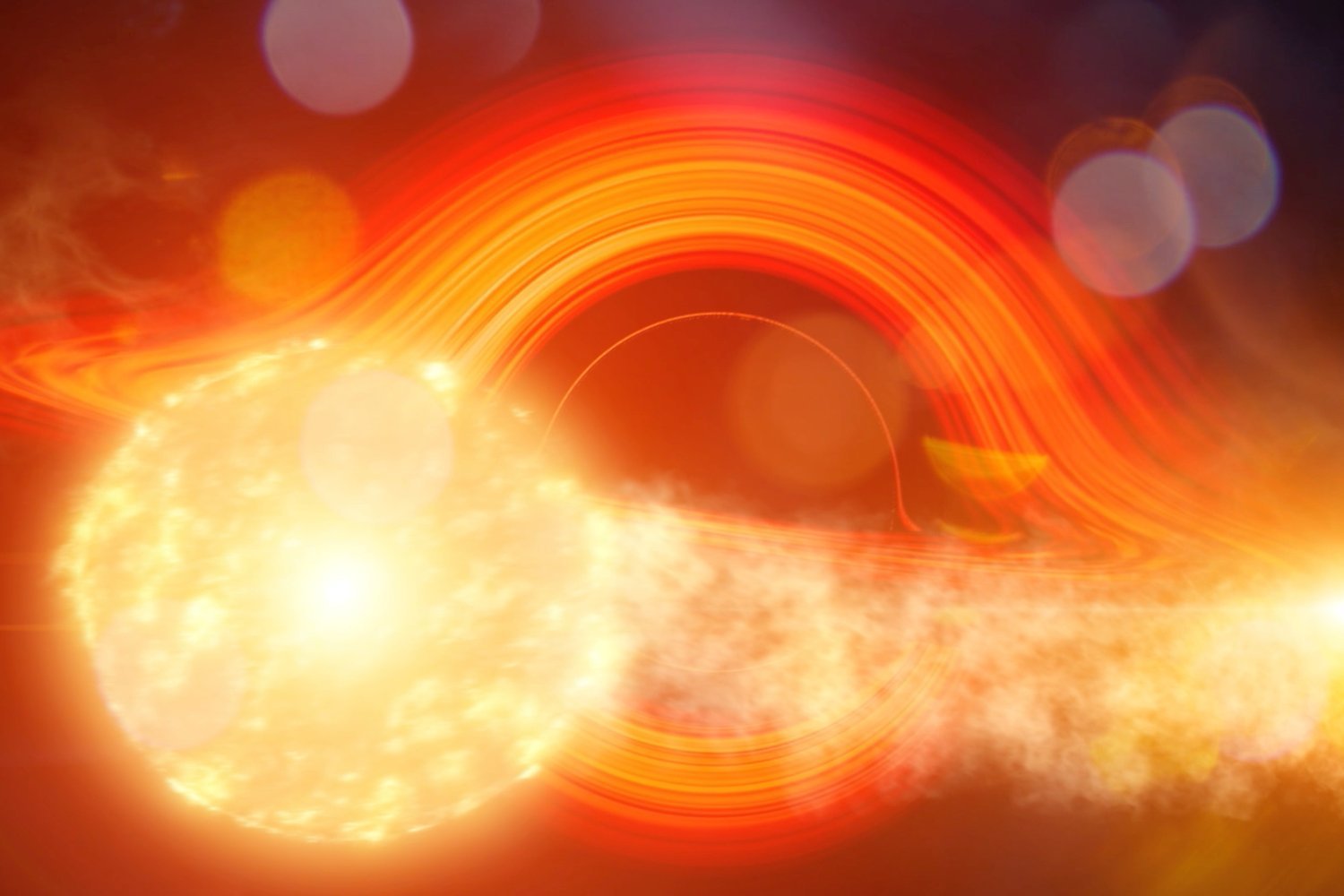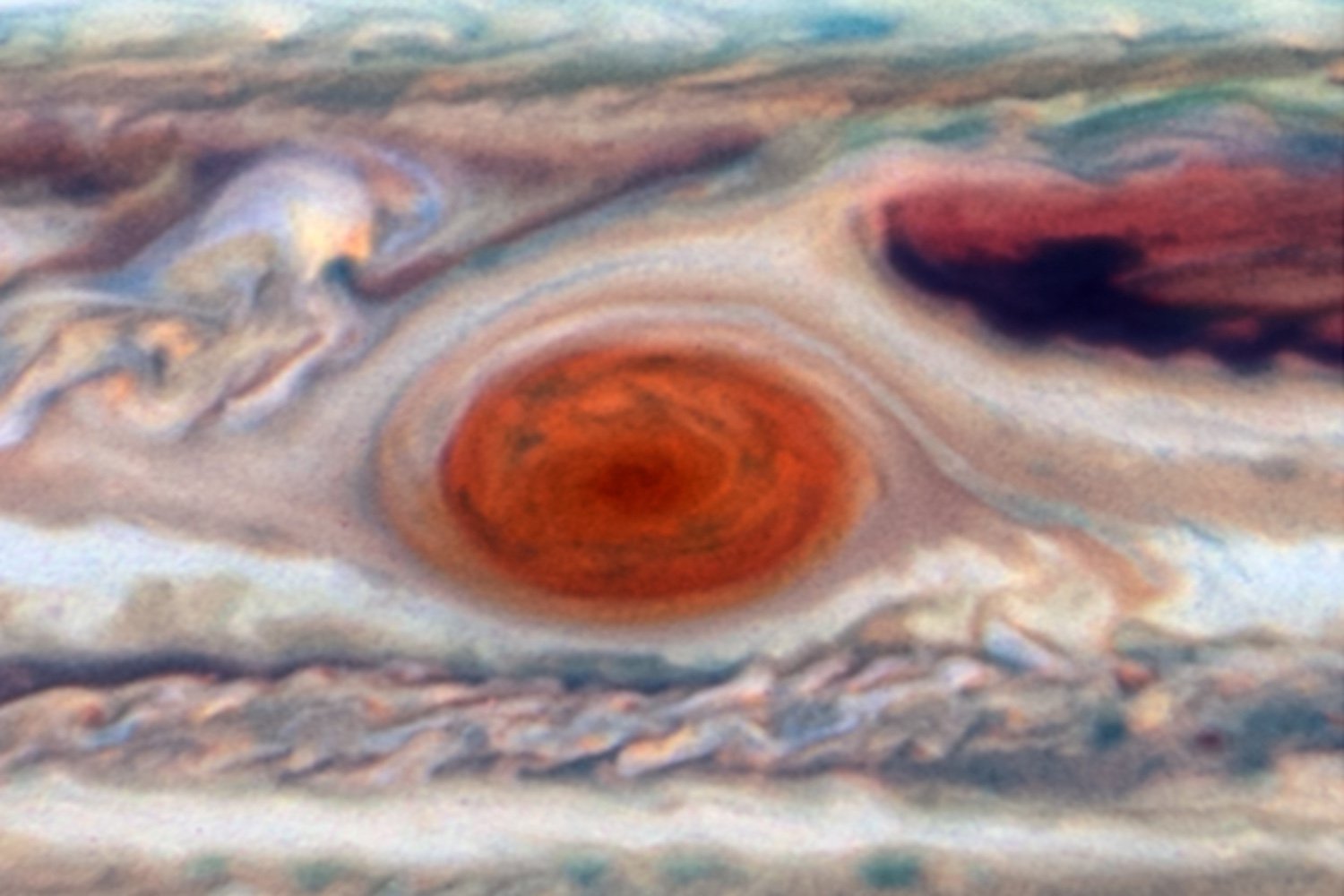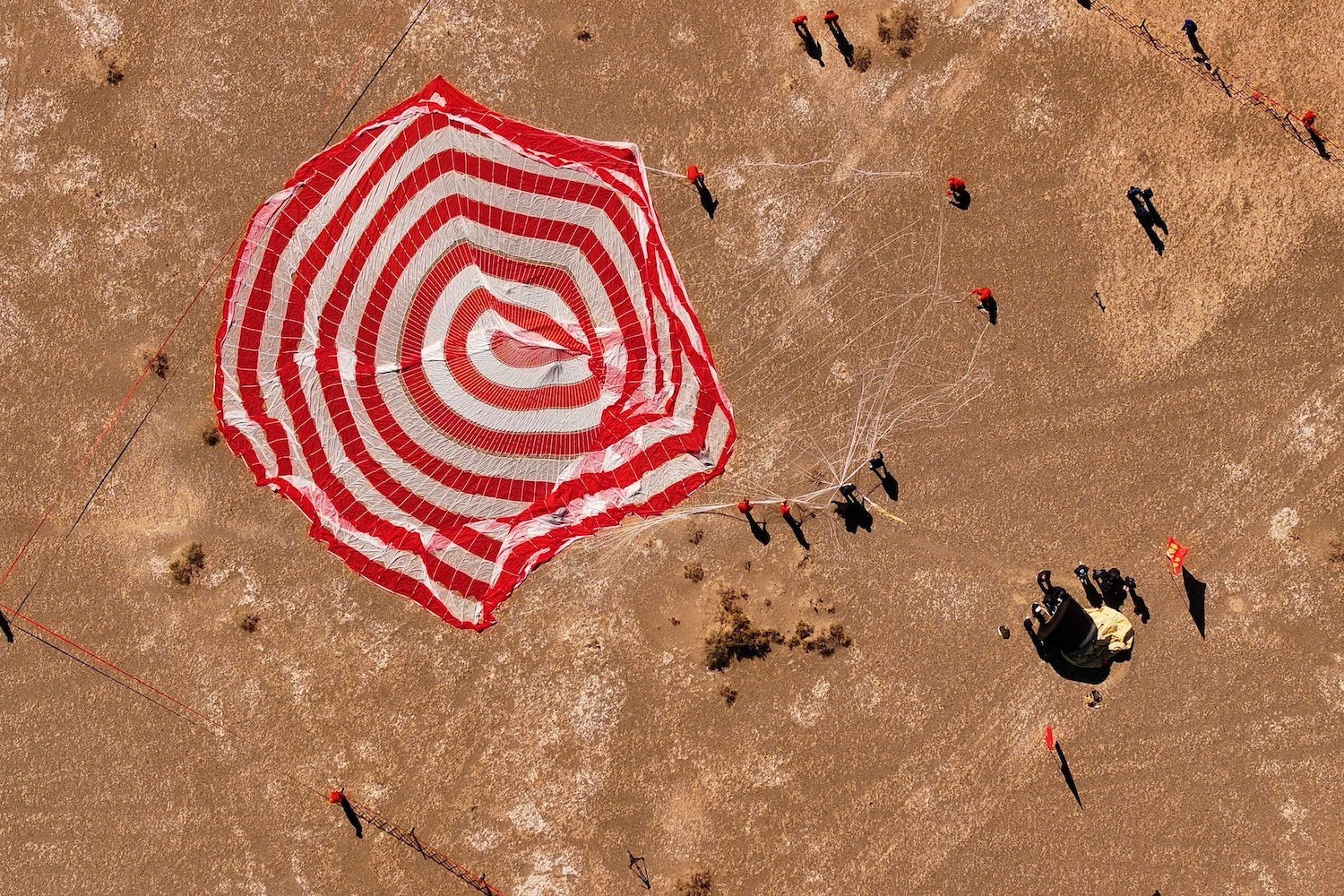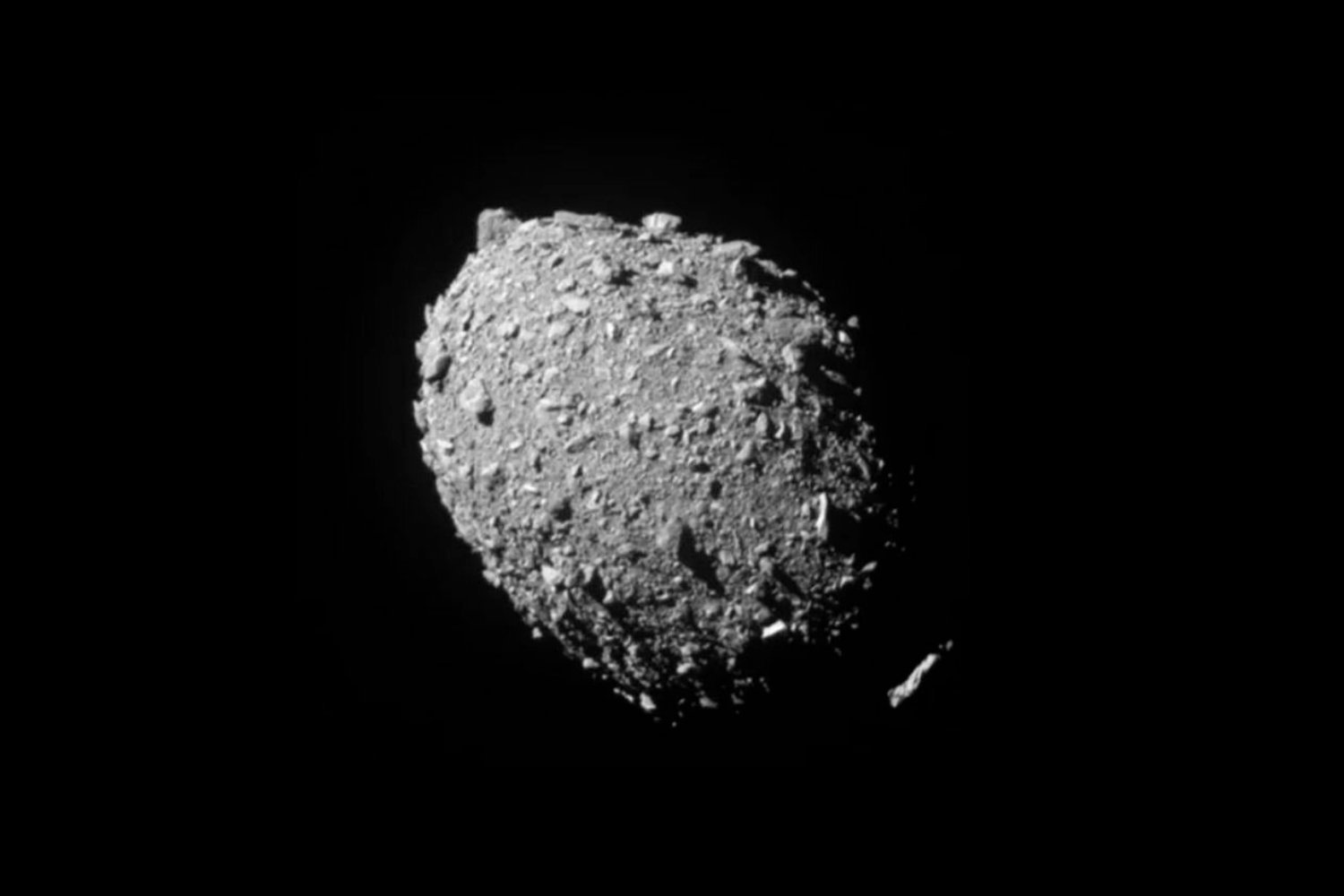NASA’s Perseverance rover continues its exploration of the Martian landscape, regularly sending back images that spark curiosity and imagination. Amongst the latest batch of photos is a peculiar rock formation that bears a striking resemblance to a weary face.
Perseverance, currently traversing Jezero Crater, a region potentially once flooded with water, captured the image on September 27, 2024, using its mast-mounted camera. The photo depicts a scattering of rocks across the sandy terrain, with one particular rock, situated on the far left, stealing the spotlight. This oddly shaped rock resembles a face lying on its side, complete with discernible eyes, a nose, and a mouth. Though somewhat squashed, the resemblance to a human face is undeniable.
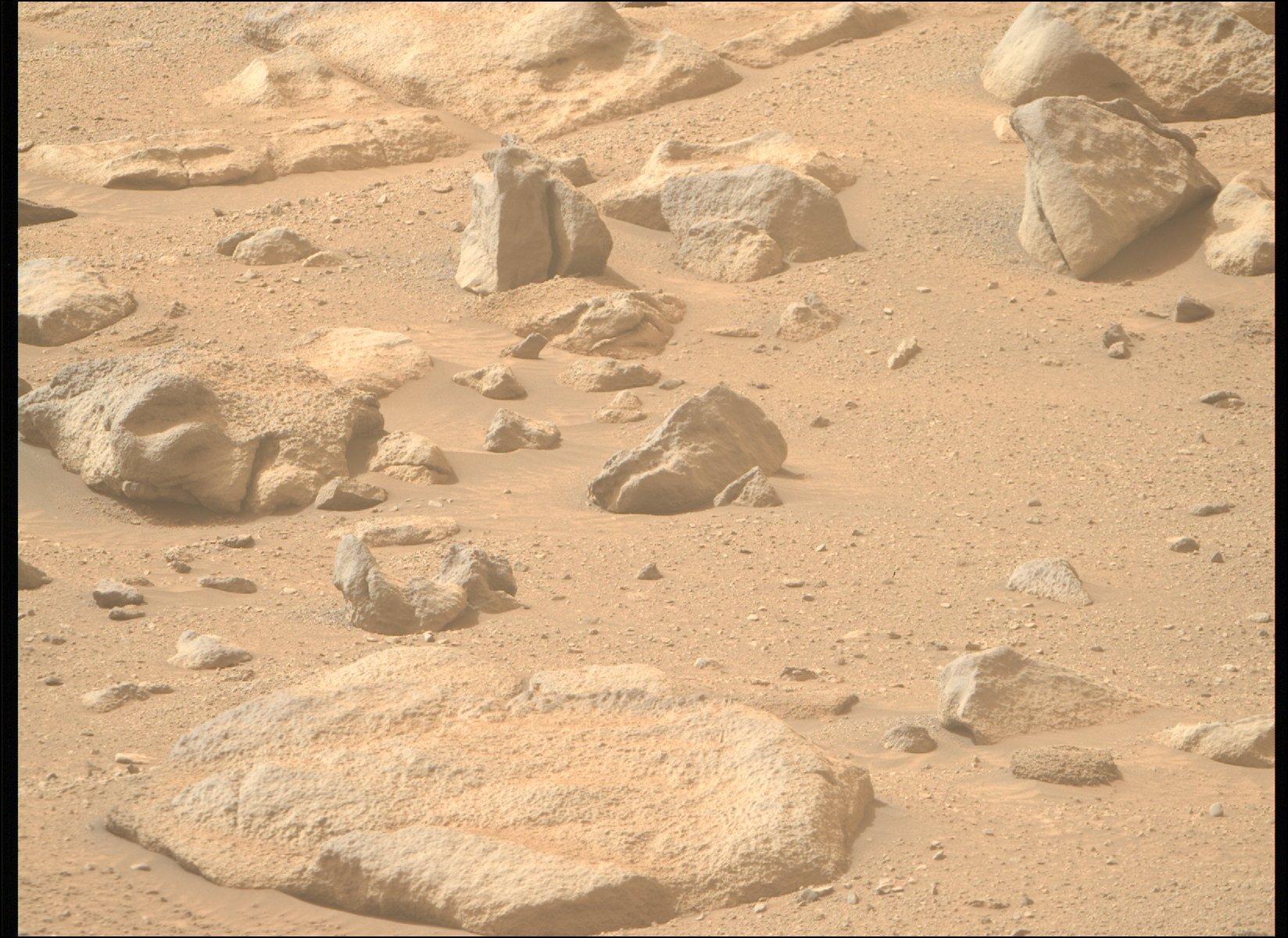 Mars PerseveranceImage taken by Perseverance on September 27. Credit: NASA/JPL-Caltech/ASU
Mars PerseveranceImage taken by Perseverance on September 27. Credit: NASA/JPL-Caltech/ASU
Mars’ Rocky Landscape: A Playground for the Imagination
Mars, a cold, dry desert, is known for its unusual rock formations. Situated near the asteroid belt, with a thin atmosphere just 1% the density of Earth’s, the planet is frequently bombarded by space rocks. These rocks, often landing in larger pieces due to the minimal atmospheric resistance, contribute to the diverse array of shapes and sizes found on the Martian surface. Volcanic activity, wind erosion, and ancient water flows have also played significant roles in shaping the planet’s rocky landscape.
Pareidolia: Seeing Faces in the Rocks
The “face” rock is just the latest in a series of intriguing formations captured by Perseverance. Earlier, the rover spotted a zebra-striped rock, nicknamed “Freya Castle” after a prominent summit in the Grand Canyon, and another resembling a leopard’s pattern. These discoveries, while fascinating, often highlight the human tendency to find familiar patterns in random stimuli, a phenomenon known as pareidolia. This psychological illusion leads us to impose meaningful interpretations on insignificant objects or patterns.
The “Face on Mars”: A History of Misinterpretation
The history of Martian exploration is peppered with instances of pareidolia. In 1976, the Viking 1 orbiter captured an image of the Cydonia region, revealing a formation that resembled a human face. This sparked theories of an ancient Martian civilization, with the “face” perceived as a monument. Subsequent higher-resolution images revealed the formation to be nothing more than a naturally occurring hill.
Beyond Pareidolia: The Scientific Value of Martian Rocks
While pareidolia can lead to imaginative interpretations, the rocks on Mars hold genuine scientific value. Their composition and structure offer clues to the planet’s geological history, potentially revealing evidence of past water flows and even signs of past life. Perseverance’s mission, which includes collecting rock samples for future return to Earth, is crucial in unraveling the mysteries of the Red Planet.
Conclusion: The Search for Meaning on Mars Continues
The “face” rock, like previous intriguing formations, underscores the human fascination with Mars and the ongoing quest to understand its past. While pareidolia often influences our interpretations, these curious formations highlight the importance of scientific investigation and the continued exploration of our neighboring planet.



